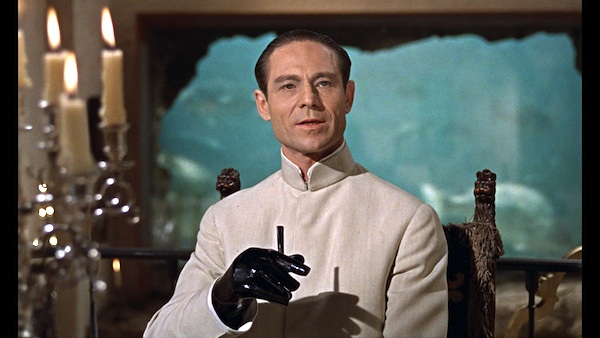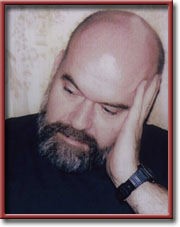Dr. No

“Here was a heart doctor with such a bent for negativity that it almost seemed that his heart ‘was not in the right place.’ That is, it was on the right side, which is the wrong side.”—Sanford Rose
Dolors & Sense
By Sanford Rose

 KISSIMMEE Florida—(Weekly Hubris)—1/13/2013—Remember the James Bond thriller of the early 1960s? Dr. No was the evil operative who tried to sabotage an American space flight. In the novel on which the movie was based, Dr. No had survived an earlier attempt on his life because his heart was on his right rather than his left side.
KISSIMMEE Florida—(Weekly Hubris)—1/13/2013—Remember the James Bond thriller of the early 1960s? Dr. No was the evil operative who tried to sabotage an American space flight. In the novel on which the movie was based, Dr. No had survived an earlier attempt on his life because his heart was on his right rather than his left side.
In the last 50 years, of course, the term Dr. No has been routinely applied to politicians who reflexively reject policy initiatives.
All these associations converged when I accompanied my wife on an urgent recent visit to her cardiologist to discuss her atrial fibrillation.
Here was a heart doctor with such a bent for negativity that it almost seemed that his heart “was not in the right place.” That is, it was on the right side, which is the wrong side.
The man is not exactly patient-friendly. This may not be significant to some, but studies do suggest that patients fare better when in the hands of a doctor who manifests some smidgeon of human warmth.
Not this man. Cold, clipped and, to all appearances, constitutionally averse to exposition, he entered the examining room, cast a disapproving glance in my direction, and said to my wife, “Have you decided on the type of blood thinner?”
“Hold on, Doctor. Is there unequivocal evidence of atrial fibrillation—no P wave and an irregular R-R interval?”
A brief, impatient nod of the head.
“Are there any therapies besides blood thinners (which lessen the risk of stroke but do nothing to correct the underlying problem)?”
“No, not for your wife.”
“Well, I know drug therapies don’t generally work. What about cardioversion (electrically shocking the heart back to sinus rhythm)?”
“Useless.”
“How about implantation of a combination pacemaker and defibrillator with the capability to apply small shocks that counteract fast rhythms in both the atrium and the ventricle?”
“Not indicated.”
“How about catheter ablation to isolate the pulmonary veins (thought, by many, to be main source of electrical dysfunction in the atrium)?”
“Your wife is too old.”
Then I think to myself: This will get nowhere. The literature suggests that advanced age is no barrier to doing catheter ablation unless there is some evidence of profound cardiac morbidity. But that doesn’t apply to my wife who, apart from Afib and some mild ventricular hypertrophy, has a fundamentally sound heart.
And, of course, there are newer ablation techniques that seek to identify just a few key areas within the atrium, often only three, that computer analysis reveals are the rotors, or triggers, for Afib in a particular patient. With these techniques, the entire ablation can often be completed in less than a half hour instead of the three to six hours needed in the conventional procedure, thus sparing an elderly patient the necessity of remaining under general anesthesia for a protracted period of time.
The techniques are still, to some extent, experimental, but they are being employed in a number of centers around the country and boast a success rate of up to 85 percent.
Then I pause and reflect: Maybe I’m giving the esteemed Aesculapian before me the wrong monicker.
Maybe, he isn’t, perish the heretical thought, familiar with the progress being made in ablation technology.
Perhaps, he isn’t Dr. No, but Dr. Don’t Know.
5 Comments
Paul Sampson
I hope you’ve fired this asshole. The world is full of cardiologists. Most of them have, as well as treat, hearts.
S. Rose
We will get a second opinion.
Thanks.
S. Rose
Elizabeth Boleman-Herring
Sanford, it was bad enough dealing with US specialists when they were, just, the “blind men with the elephant.” Now, they’ve become heartless as WELL as brainless, for the most part. You were so correct in opining that, after 50 (or 40?), every man must be his own doctor (or is his/her own BEST doctor). As you know, I’ve been through “diagnostic hell” these past six months, relying on my own research to figure my way out of a iatrogenic morass. And I’m one of those who’s actually looked AFTER my health. I pity those with less wit and fewer resources, trying to find their way out of America’s medical mazes.
S. Rose
Remember Trevelyan’s maxim: “Every man has two doctors–the left leg and the right.” To be sure, you have been well exercised (and are now suitably exercised at the medical establishment), but let those who are not recall that physical activity is often the best physic. It can even offset a bad diet. Well, sometimes.
But you are right. One of the worst experiences in life is being enmeshed in the embrace of organized medicine.
Elizabeth Boleman-Herring
“Organized medicine”: a true oxymoron. :-)